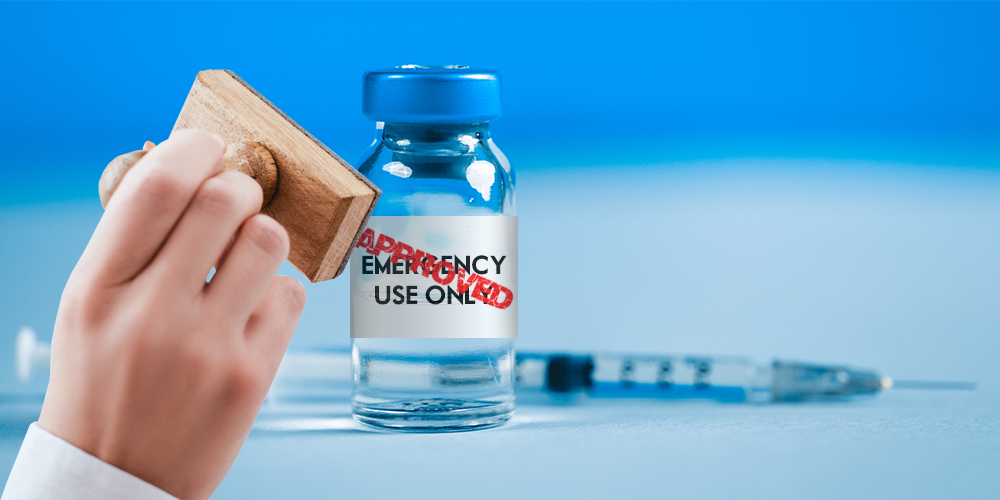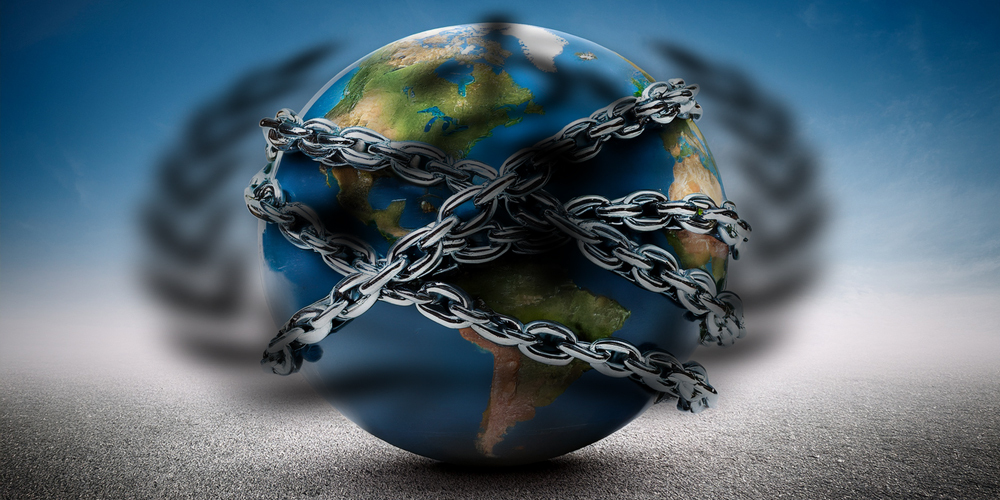The World Health Organization’s (WHO) hastily adopted Pandemic Treaty may seem like a done deal—but it’s an unfinished, freedom-threatening framework that demands public scrutiny and resistance.
Listen to the audio version of this article:
THE TOPLINE
- Despite claims of adoption, the “Pandemic Treaty” lacks key provisions—especially around pathogen access—and cannot be finalized until at least 2026.
- The accord promotes a globalized, top-down health surveillance regime under the “One Health” banner, raising concerns over national sovereignty and individual freedoms.
- With concerning language around “misinformation” and fast-tracking unproven treatments, the treaty risks enabling censorship, limiting medical choice, and suppressing dissent in future health crises.
Recently, at the 78th World Health Assembly (WHA), the World Health Organization (WHO) took a major step in its ongoing effort to secure unprecedented global control over pandemic response measures when the full Assembly declared “consensus” and adopted the Pandemic Treaty, formally called the Pandemic Prevention, Preparedness and Response Accord. If the WHO gets its way, it will be medicine by diktat, and you can kiss your freedoms goodbye during the next pandemic…whenever the WHO Director-General decides that is.
The key thing to understand is that this is all an effort to centralize decision-making at the WHO, effectively forming a global pandemic cartel that funnels customers, and profits, straight into the hands of Big Pharma—all at the expense of your freedom. It’s all there in the treaty: they want to heighten bio-surveillance to identify pathogens of concern, allow Big Pharma to fast track drugs or vaccines to fight that pathogen, and then get the entire population to take that drug or vaccine via sophisticated propaganda mechanisms, censorship, and quelling of dissent. Autonomy and choice are not part of their equation.
And if you’re thinking we’re safe because President Trump withdrew the US from the WHO, think again: the next president can just as easily re-join the WHO and make the US a part of this global scheme once more.
A Treaty in Name Only
Despite appearances, this is not the final word on the Pandemic Treaty. The WHO’s claim of a successful adoption conceals an important fact: the agreement is incomplete and cannot be signed, ratified, or enforced in its current form. Key provisions remain under negotiation, particularly the controversial Pathogen Access and Benefit-Sharing (PABS) system, which was stripped from the main text and relegated to an annex. According to international law and WHO protocol, the treaty cannot be considered whole until this annex is completed and formally adopted—a step now postponed until at least the next Assembly in May 2026.
For now, what the WHO has secured is little more than a framework—a shell of an agreement without its most contentious elements.
Centralized Power Under the One Health Banner
At its core, the treaty promotes what the WHO calls the “One Health” approach—a concept developed by the US Centers for Disease Control and Prevention—which integrates human, animal, and environmental health data into a shared surveillance system. While it may sound reasonable in theory, we fear it opens the door to intrusive global bio-monitoring under the justification of pandemic prevention.
Although there are consistent attempts to make it sound like the WHO cannot impinge on national sovereignty, it’s also clear that nations are expected to expand their public health infrastructure to comply with international standards. This reconfiguration of authority would place the WHO in a better position to shape, if not outright direct, national responses to future pandemics.
Fast-Tracking Experimental Treatments
The Treaty commits countries to strengthening their regulatory systems to allow for emergency use authorizations of investigational medical products, which could include genetic ‘vaccines’ and novel gene-therapy products.

The language prioritizes speed and conformity over caution or “informed consent”—a phrase that does not appear throughout the entire document. Safety monitoring and post-market surveillance are mentioned only in passing, while pressure to approve and distribute novel treatments rapidly is embedded throughout. The risks of such an approach—including unforeseen side effects, long-term injuries, and lack of accountability—remain largely unaddressed.
Silencing Dissent in the Name of Health
Another deeply concerning element is the treaty’s focus on controlling information (see Article 16). Signatory countries would be expected to counter “misinformation” and “disinformation” about pandemics and health products:
“Each Party shall, as appropriate, take measures to strengthen science, public health and pandemic literacy in the population, as well as access to transparent, timely, accurate, science- and evidence-based information on pandemics and their causes, impacts and drivers, as well as on the efficacy and safety of pandemic-related health products, particularly through risk communication and effective community-level engagement.
Each Party shall, as appropriate, conduct research and inform policies on factors that hinder or strengthen adherence to public health and social measures in a pandemic and trust in science and public health institutions, authorities and agencies.“
In practice, of course, this could translate into sweeping censorship measures, especially during declared public health emergencies. Dissenting voices could find themselves marginalized or outright silenced in the name of consensus.
As you can see, the draft encourages research into how to build “trust in science” and promotes shaping public behavior through strategic communication and risk messaging. But what exactly does “trust in science” mean in this context? If past experience is any guide, it appears to mean unquestioning acceptance of the WHO’s chosen narrative—regardless of evolving evidence. The last pandemic revealed serious flaws in this approach, with rigid policies like prolonged school closures, mask mandates, social distancing rules, and vaccine mandates often promoted as “settled science,” only to be later challenged or reversed. Trust in science should be earned through transparency and accountability, not enforced through propoganda campaigns.
A Trojan Horse for Permanent Emergency
Although the WHO insists that its recommendations are non-binding, history suggests otherwise. During the COVID-19 pandemic, many countries followed WHO guidance, even when it led to significant economic, social, and personal harm. The current treaty aims to formalize that relationship, encouraging member states to preemptively align their policies with WHO protocols—before, during, and after pandemics.
The Fight Is Far from Over
It’s important to remember that the treaty is not yet in force. It cannot be signed or ratified until the PABS annex is completed, which will require a new round of negotiations likely lasting through the next year. Until then, the text remains a draft, and the outcome is far from certain.
We cannot let the fact that the US has withdrawn from the WHO lull is into complacency. We need to register grassroots opposition to the creation of a top-down system public health apparatus at the global level. It isn’t hard to see what will happen. You’ll be told when the next pandemic hits, made fearful of the latest virus, then offered a quick-fix: a rushed, emergency-approved vaccine or gene-based drug. They’ll claim it’s all “following the science” while manipulating data to push their agenda. Critics will be silenced, alternatives discredited, and the complexity of our immune system ignored for their one-size-fits-all solution.
Help spread the word—share this article with your network.





Thank you for your dedication and hard work!
I’m right on top of things, just as you are and I need no convincing.
Your vigilance and perseverance is helping us win the overall battle.
Kennedy fired the 17 CDC Advisory Panel of which 5 were arrested by Military CID for covering up reams of evidence of the damaging health effects of the Covid Vaccine between 2020 and 2021. They deleted a great deal of evidence but CID forensic analysts were able to recover most of it.
We will never be rid of the Deep State without the help of the Military in the upcoming battle. Stay calm.
(spoiler alert) WE WIN!
I read that there is a WHO appointed official representative for each country and only that appointed representative can authorize that said country from the pandemic treary et. al. So based on that, the president of US has zero say or authority to mandate pulling out of the WHO and the pandemic treaty. I also read that countries that pull out would be exempt from any financial aide authorized by the WHO PT. So holding financial support like a carrot with so much monopoly involved should concern everyone globally. This is not conspiracy theory. When we know now how the lingering damage of their first attempt to abuse the regulatory requirements and that get out of responsibility free card called “emergency use”, there are still millions of people dealing with malfunctioning immune systems and health problems.
With the facade of “science and evidence-based” [it] has already been adulterated and profitted from by private equity turning the healthcare industry into its global cash cow.